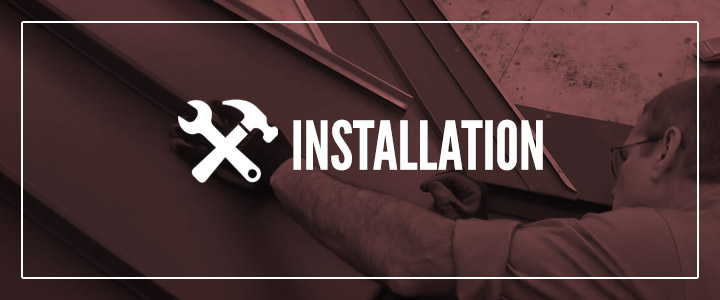Installation
Sequential installation processes make ClickLock and Universal ideal for do-it-yourselfers and first-time contractors. Eave starter, fabricated to match the pitch of your roof, is installed first, followed by intersecting flashings for gables, valleys, and wall intersections. The custom length ClickLock panels are then installed followed by hip and ridge flashings.
Installation Considerations
The exact installation plan for your new roof will be based on several considerations. Once we have a drawing showing your roof configuration, we can begin to discuss installation details with you. We will also want to consider and work with you on:
Flashings
Flashings for special protrusions such as chimneys and skylights can be fabricated on site, or by a local sheet metal company out of coil or flat stock you purchased with the roof kit. If desired, we can also custom fabricate those flashings for you and make them part of the kit. We work closely with you in order to get the drawings and other things we need to ensure the proper dimensions of those flashings.
Tear-Off vs. Clean Installation
With standing seam applications, the most assured way of having a clean, flat installation with smooth and ripple-free panels is to remove the old shingles. However, it is not uncommon for ClickLock to be installed over the existing shingles. You can send us photos of your existing shingles for our input on this matter.
Underlayment
For all installations, underlayment must be installed. We recommend a layer of synthetic underlayment such as RoofAquaGuard UDLX. If the old shingles are removed, then ice and water shield such as RoofAquaGuard MT should be used where required by code. You are responsible for being aware of any special code requirements in your area. Your local building inspector’s office should be able to give you that information.
Ventilation
Please let us know what ventilation your attic currently has; we are strong believers in ventilation for most buildings. We will discuss whether your structure has adequate ventilation, or not, as well as the options for improvement.

